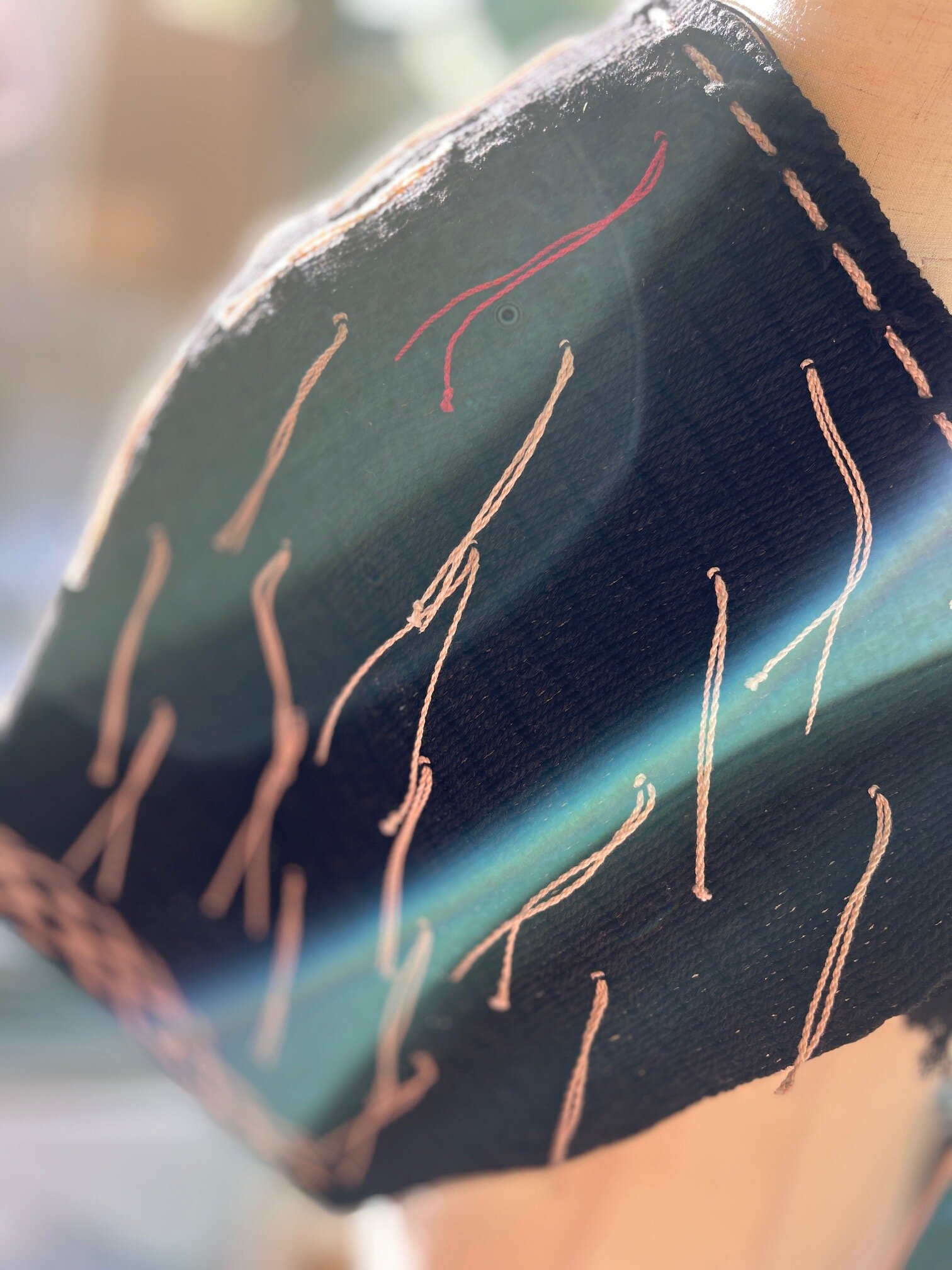Kirana O’Connell
HŪTIA - protocols for scaling a flagpole
Hūtia meanings:
To haul out
To raise (as in flag)
To pluck (as in bird)
To reel in (as in fish)
Since the creation of the well known tino rangatiratanga flag in the 1990s by Hiraina Marsden, Jan Dobson and Linda Munn the colour palette of black (Te Korekore), red (Te Whei Ao), and white (Te Ao Mārama) have become synonymous with Māori resistance movements for self-determination and are symbolic of (among other things) the creation story with Ranginui above, Papatūānuku below, and Te Ao Mārama in between.
These works emerge directly from the earth, from Papatūānuku, and are in constant conversation with the artist’s sense of belonging and narrative. Dislocation, urbanisation, and land confiscation have continued to impact the tangata whenua of Aotearoa, and in this context, the combination of these colours speaks to the persistent tension that Māori women experience as deeply politicised and as the whare tangata, regardless of whether they choose that. It is often imagined that there is a strong correlation between western feminism and mana wāhine but these terms are not interchangeable. Rather than being absorbed by the homogenising term ‘feminism’, these works aim to re/present, re/claim, and re/centre indigneous knowledge, practices, and forms of storytelling.
The borders of each work here make reference to the cultural borders that exist between Māori women and the contexts in which they are expected to participate. The handles we hold are no longer traditional, there is a gender imbalance that is at odds with te ao Māori and the heavy weighting of the colour black (symbolic of the male element) arose from the relative diminishment of the red (female element). Hierarchies such as this did not exist in pre-colonised Aotearoa and yet here is a clear place in which the intersectional nature of indigenous feminism is clear and apparent.
Each artwork has been informed by a particular pattern, and is therefore imbued with the attributes of that pattern. These are storytelling elements in themselves.
Mana wāhine has been variously defined but central to being able to articulate and understand this concept are the intersections for Māori women between their spirituality, whānau, and the state.
These works articulate a mana wāhine narrative in contemporary Aotearoa.
Kiriana O’connell x mothermother 2021
Kiriana O’Connell (Ngāti Tukorehe, Pākehā) is a Tāmaki based weaver who works with both customary and contemporary materials including harakeke, kiekie, pingao, native and commercial dyes. She embraces traditional techniques and patterns in her work, and is continually inspired by both the mastery and artistry of her ancestors. She has been tutoring raranga workshops since 2012 and her work has been commissioned for the media industry, as well as being exhibited annually with Kaipātiki Weaving Roopū.








